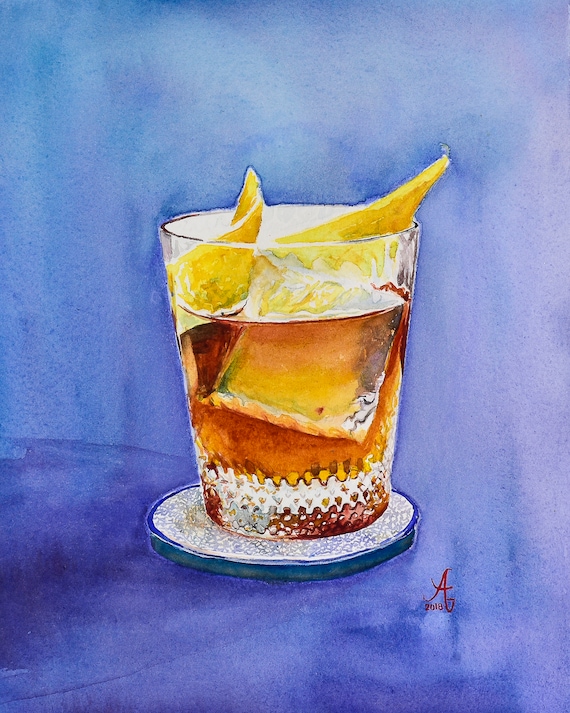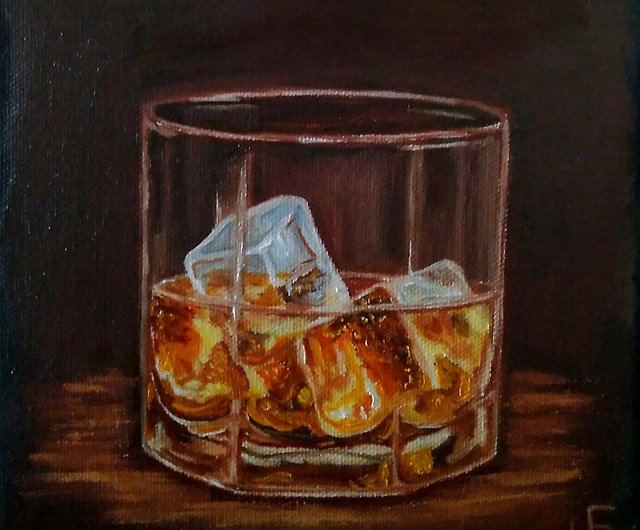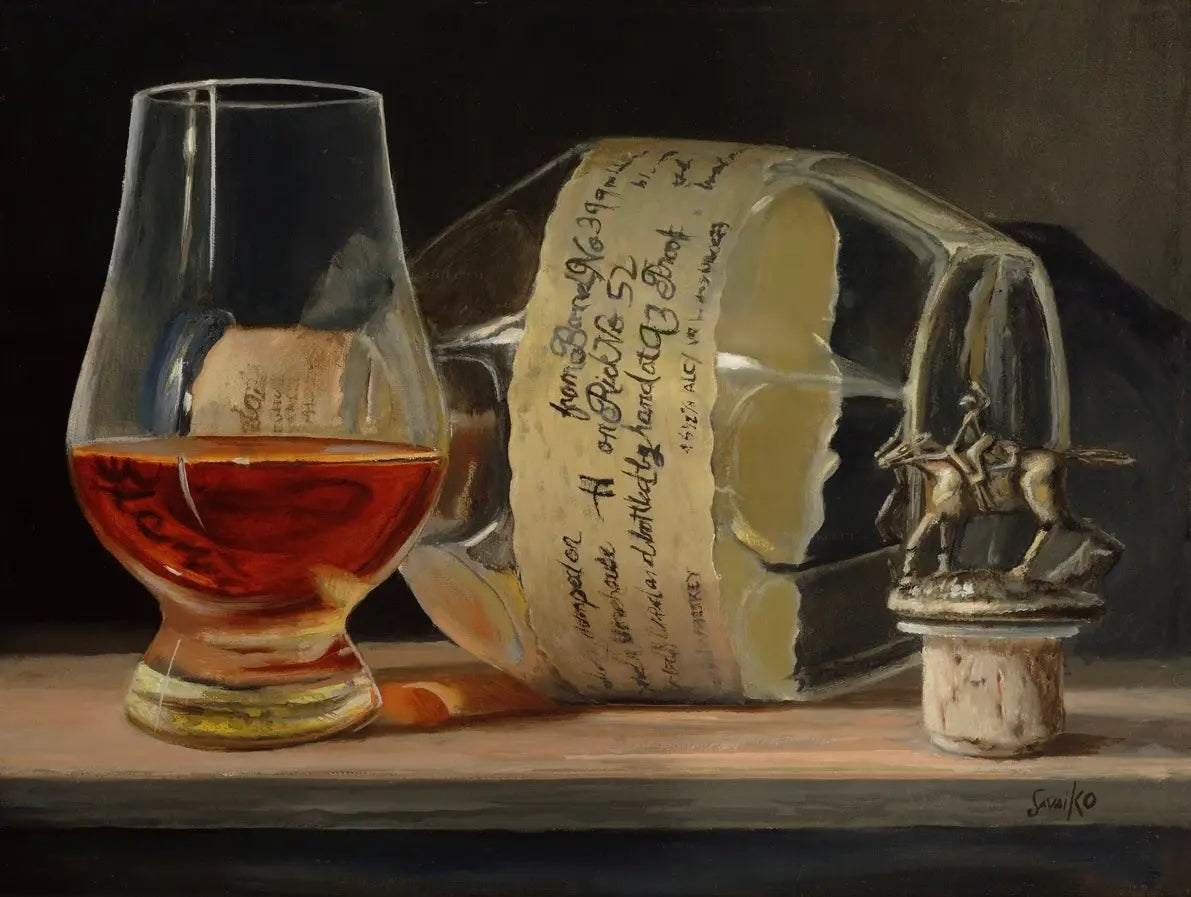The Allure of Realism Art: A Deep Study Whiskey's Rich Heritage
The Allure of Realism Art: A Deep Study Whiskey's Rich Heritage
Blog Article
The Significance of Whiskey Art in Celebrating Heritage and Craftsmanship in the Beverage Industry
The detailed connection between whiskey art and the celebration of heritage and workmanship within the beverage industry can not be overstated. Via thoughtfully made tags and bottles, bourbon brands envelop their historical roots and the artisanal abilities that define their manufacturing methods.
The Historic Roots of Whiskey
At the heart of whiskey's appeal exists an abundant tapestry of historical origins that trace back to old civilizations. The beginnings of whiskey can be connected to the purification methods of the Sumerians and Babylonians around 2000 BCE, where very early forms of fermented grain drinks started to emerge. It was in the Middle Ages that the art of purification evolved considerably, particularly in Ireland and Scotland, leading to the development of scotch as we recognize it today.
The term "scotch" itself acquires from the Gaelic word "uisce beatha," implying "water of life." This expression emphasizes the social significance of scotch in Celtic cultures, where it was often connected with routines, parties, and communal bonding. By the 15th century, distillation ended up being an identified craft within monastic neighborhoods, leading the means for the facility of lawful distilleries.
As trade routes broadened, scotch's appeal grew, transcending regional limits and recording the passion of aficionados worldwide. Bourbon Art. This historical journey shows not only the craftsmanship behind whiskey production but likewise its important function in social and social contexts, noting it as a substantial drink throughout history
Artistic Expression in Branding
Scotch branding stands as a compelling crossway of creativity and commerce, where visual identity plays an important function in shaping customer perception. The looks of scotch labels, packaging, and marketing materials mirror not just the brand name's story yet additionally its core worths and heritage. With creative expression, distilleries convey a narrative that reverberates with customers, evoking emotions and stimulating connections.
Using color, typography, and images in branding serves to differentiate items in a saturated market. For instance, traditional themes may stimulate a sense of credibility and craftsmanship, while modern styles can represent innovation and forward-thinking. This calculated creative instructions enhances brand name recognition and commitment, permitting consumers to build a personal partnership with the scotch they choose.
Additionally, imaginative expression in branding typically works as an event of local heritage. Distilleries frequently integrate neighborhood symbols or historic recommendations into their styles, producing a local color that invites consumers to take part in a more comprehensive social experience. Eventually, the artistry behind bourbon branding not just enhances aesthetic allure but also enhances the overall story of the brand name, fostering a deeper recognition for the workmanship and heritage ingrained in each bottle.
Craftsmanship in Bottle Style
The virtuosity obvious in bourbon branding expands beyond visual identity to include the craftsmanship included in container layout. Each container offers as a vessel not just for the spirit within, however likewise for the story it informs regarding its practice, origin, and high quality. The design process needs careful interest to detail, as aspects such as closure, form, and material add dramatically to the total assumption of the scotch.
Craftsmanship in bottle design entails picking high-grade glass that can boost the scotch's color and clarity, while additionally giving a responsive experience for the consumer. The silhouette of the container need to be both aesthetically enticing and practical, commonly reflecting the heritage of the brand. Several distilleries choose distinct forms or printed logo designs that evoke a feeling of authenticity and history.
In addition, the label design and typography play a crucial function in communicating the brand name's story. Limited Edition. A well-crafted bottle not just mesmerizes the consumer's eye yet also enhances the brand's dedication to high quality and practice. In this means, the craftsmanship of container style comes to be a crucial aspect of site web the scotch experience, combining creativity with a profound respect for heritage
Cultural Value of Scotch Art
Commemorating custom and workmanship, the cultural relevance of whiskey art transcends plain aesthetics, intertwining with the historic and social narratives of the regions where it originates. Each bottle works as a canvas, depicting the special tales, folklore, and customs that have actually formed neighborhood whiskey-making methods. The elaborate designs commonly reflect the heritage of the distillers, including icons and concepts that resonate with the society and values of their neighborhoods.

Furthermore, scotch art plays a vital duty in communal celebrations and celebrations, functioning as a tangible link in between individuals and their shared experiences. By appreciating the virtuosity in scotch product packaging, consumers cultivate a much deeper understanding and respect for the craft, eventually enriching their pleasure of the drink itself.
Modern Trends in Whiskey Presentation
Recently, the discussion of whiskey has progressed to reflect contemporary preferences and fads while still honoring standard workmanship - Bourbon Art. Distilleries are progressively concentrating on aesthetic elements that enhance the general alcohol consumption experience, bridging the gap between heritage and modernity
Cutting-edge container designs have emerged, typically incorporating sustainable materials and creative tags that inform engaging tales. Many brands now work together with regional musicians, instilling their items with unique visual expressions that resonate with Full Report consumers. Furthermore, limited-edition releases are commonly packaged in collectible containers, including worth and allure for view aficionados.

Verdict
In conclusion, scotch art offers as an important avenue for sharing the heritage and workmanship integral in the drink sector. Via intricate branding, innovative bottle layouts, and culturally considerable creative aspects, scotch brands effectively recognize their practices and attach with consumers.


Workmanship in bottle design involves picking high-grade glass that can boost the scotch's color and quality, while additionally supplying a tactile experience for the customer. In this means, the craftsmanship of bottle layout ends up being an important aspect of the bourbon experience, merging virtuosity with an extensive respect for heritage.
In verdict, scotch art serves as an essential channel for expressing the heritage and workmanship intrinsic in the beverage sector.
Report this page